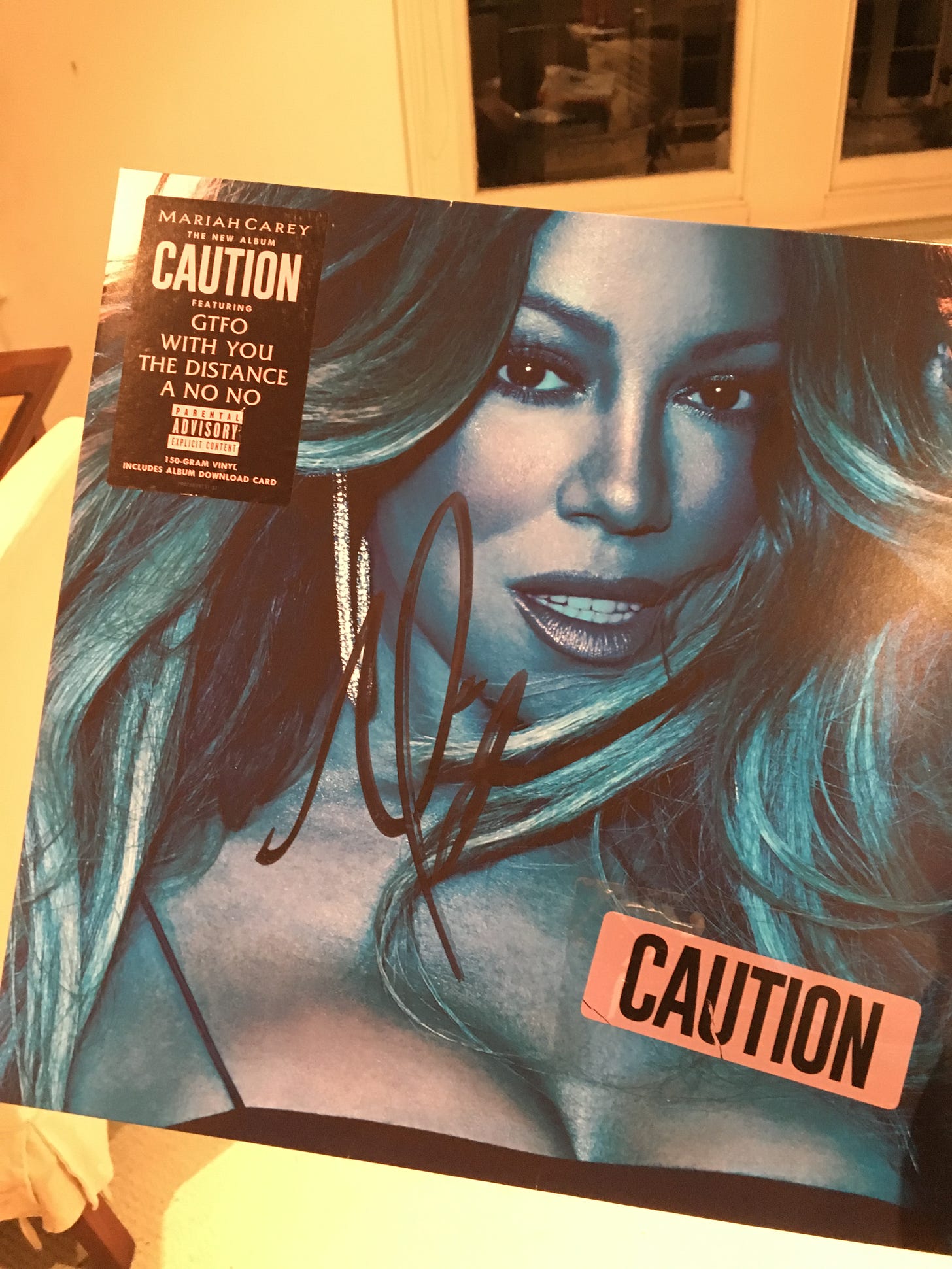Small stuff that matters
Autographs, scribbles, misprints and stickers can affect the value of records in more ways than you would think

There it is. That record. You’ve wanted it for ages.
On closer inspection though, you notice a sticker on the front cover. Is this a blessing or a curse?
What about that scribble? And autographs?
My friend
from the brilliant Earworms and Song Loops gave me this great idea as part of my mini-series on value.Essentially, the small stuff that doesn’t often get a lot of attention but can have a significant impact on value.
Stickers
We should make a distinction between price stickers and promotional stickers.
Price stickers
They tend to affect value negatively, so you should remove them if you can. Do not force them off the record, though. The damage you can cause trying to remove a stubborn sticker is worse than the sticker itself.
If the sticker is relatively new, it shouldn’t be too difficult to remove. Use your fingernail only (thumb works best) very gently. If it doesn’t budge, don’t force it.
Legacy price stickers (e.g. old prices, or currencies which don’t exist anymore — this happens a lot in the Eurozone) are harder to remove. Personally, I wouldn’t even try.
When reselling records with price stickers, it’s good practice to mention this in the item description (and grade the record sleeve down a notch accordingly).

Promotional stickers
These are your typical “Mariah’s new smashing record, including the hits so and so”, often printed using the colours and theme of the artwork in question. They tend to enhance value, so you want to keep them.
When you buy a new record, if you tear off the shrink completely, try to remove the sticker from the shrink (carefully!) and place it onto the record. You can charge more when you resell. (Ideally, keep the original shrink, but this is not always possible, e.g. gatefold records).
Scribbles
They tend to impact value negatively. You should pay less for records with scribbles or marks, and should charge less when reselling them.
Autographs
When non-personalised (i.e. without the recipient’s name), they can be a huge value enhancer, especially if the artist or band has a cult following. Some of the most expensive records ever sold were autographed.
Personalisation is a price diminisher, unless the recipient is also famous (e.g. from Rod Stewart to Beyonce).
When selling autographed records, I would recommend getting the autograph authenticated. Some companies provide authentication services and can issue certificates of authenticity on request (certain criteria must be met).
Misprints
These are mistakes or errors on the sleeve or record. They typically affect a small batch, so they are sought-after by completists.
Before you get carried away, remember the overriding principle of supply and demand: the record/artist must be popular, first and foremost, in order for misprints to have a significant impact on value.
Some Beatles records are famous for this. Another common example is Mariah’s debut album (the very first batch was printed before the final track was added to the record).
Sometimes, the mistakes are in the audio. Some copies of Taylor Swift’s Speak Now have been mispressed with a completely different record—hat tip to my friend
from the brilliant who shared this amusing piece of news with me.That’s it for today. Can you think of other value enhancers/diminishers? See you in the comments.
Thanks for reading/listening. Happy spinning!






Andres, when I read your posts it often makes me think about the ways in which the world of records and the world of books are similar. Stickers...scribbling! These also devalue first edition books in terms of sales value. (However, I do love when I have something that has a sticker for a discontinued currency, feels like a bit of history:)
With records now including download codes along with the vinyl, I'll be curious to see how whether or not it's already been used will/won't affect value in the future.